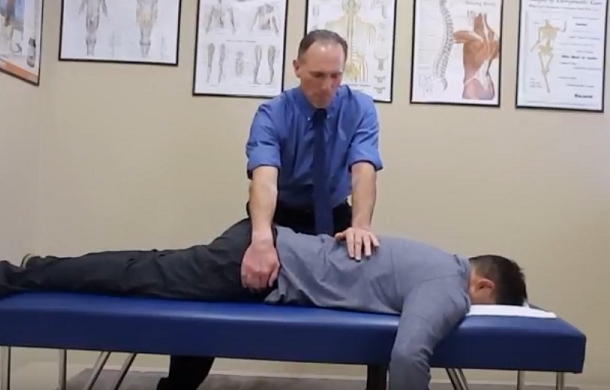Chiropractic treatment is effective for a wide range of conditions. Unknown by many is how consistent chiropractic care helps manage non-musculoskeletal conditions such as asthma.
Chiropractic care is drug-free, surgery-free functional medicine. The primary objective of Chiropractic treatment is to restore proper skeletal motion and optimize nerve flow to maximize the body’s natural capabilities.
Doctors of Chiropractic utilize a treatment procedure named the chiropractic adjustment or manipulation. The chiropractic adjustment is a high velocity, low-amplitude, focused thrust that re-establishes proper motion to a joint and lessens impingement on a nerve. Chiropractic adjustments can be executed on any joint in the body including the spine, ribcage and shoulders.
Chiropractic treatment balances and regulates the body. If a body system is under-reacting the restoration of proper nerve flow to the area increases function. If a body system is over-reacting the restoration of proper nerve flow helps decrease the over-reaction.
Disclaimer: Chiropractic care is not a cure for asthma. Chiropractic treatment may help to alleviate the intensity and lessen the frequency of asthma symptoms by optimizing nerve flow, improving spinal motion and improving ribcage motion.
According to the National Heart, Lung and Blood Institute the definition of asthma is as follows, “Asthma is a chronic lung disease that inflames and narrows the airways. Asthma causes recurring periods of wheezing, chest tightness, shortness of breath and coughing.”
The term asthma comes from the Greek word for “panting.” Asthma sufferers pant and wheeze because they can’t get enough air into their lungs. Asthma sufferers often experience a burning sensation in their lungs and throat before, during and after an attack.
Asthma is characterized by inflammation and airway obstruction. Asthma is often described as a chronic inflammatory disease of the breathing airways.
The body’s immune system overreacts to the stimulus or trigger. The overactive response includes excessive mucus production and smooth muscle contraction known as bronchospasm. This combination constricts the airways.
The tubes of the lungs, known as the bronchioles, become inflamed. The inflammation constricts the airway thus blocking air from passing through and making breathing difficult.
Two types of asthma exist. Allergic Asthma, also known as Extrinsic Asthma, and Non-Allergic Asthma, also called Intrinsic Asthma. The symptoms of both types are identical but the sources differ.
- Allergic (Extrinsic) Asthma symptoms are triggered by an allergic reaction or outside source. The triggers include inhaled allergens such as dust mites, pet dander, mold, smoke and pollen. Allergic Asthma is more common than non-allergic.
- Non-Allergic (Intrinsic) Asthma symptoms are triggered by factors not related to allergies. The triggers include stress, anxiety, emotional distress, exertion, dry air, cold air, hyperventilation and viruses.
The American Academy of Allergy, Asthma & Immunology displayed the following Asthma statistics on its website:
- One in 12 people (about 25 million or 8% of the U.S. population) had asthma in 2009, compared with 1 in 14 (about 20 million or 7%) in 2001.
- About 1 in 10 children (10%) had asthma and 1 in 12 adults (8%) had asthma in 2009.
- Women were more likely than men and boys more likely than girls to have asthma.
- The number of people with asthma continues to grow.
The asthma inhaler delivered a medication called a bronchodilator and may possess a corticosteroid. The bronchodilator is a substance that dilates or unconstricts the bronchioles. A corticosteroid may reduce inflammation. In most cases a puff from an inhaler will open the airways and restore breathing. Inhaler use is required in emergency situations and necessary during moderate and severe attacks.
Chiropractic care for any condition starts with a thorough consultation and examination. The two primary objectives in chiropractic treatment for asthma are as follows:
- Optimization of proper nerve flow from the spinal cord throughout the thorax including all structures involved in breathing.
- Restoration of proper skeletal motion throughout the spine and ribcage.
In most cases of asthma, chiropractic adjustments will be performed on the neck, midback, lower back, ribcage and shoulders. These areas comprise the course of the nerves that travel from the spinal cord into the ribcage and every joint that is involved in breathing. Restoration of proper motion to these numerous joints re-establishes optimal nerve flow and may decrease symptoms.
Various soft tissue techniques may be employed to reduce muscle tension in the spine and ribcage. These techniques will be focused on the specific areas of nerve impingement and muscle tightness.
Eliminating skeletal and muscular fixations in the thoracic spine and ribcage through chiropractic treatment increases breathing capabilities in asthma sufferers. This vital component to chiropractic treatment assists many asthma sufferers in managing their symptoms.
A key ingredient in chiropractic treatment for asthma is patient education. The patient will be taught solutions to lessen the extrinsic factors of asthma and to better control the intrinsic factors of asthma. The chiropractic doctor will discuss lifestyle modifications to eliminate asthma triggers and help the patient breath better.
Nutritional strategies will be provided to educate the asthma sufferer on how to provide the body healthy, anti-inflammatory foods.
In-office chiropractic treatment used in conjunction with healthy personalized nutritional strategies and at home modifications are extremely powerful tools to help alleviate the severity of asthma symptoms and decrease the frequency of asthma attacks. Asthma prevalence and incident are growing to near epidemic numbers. The utilization of regular chiropractic care can help this large population live a healthier, fitter, more functional life by increasing their breathing capabilities.
Dr Donald A Ozello DC of Championship Chiropractic in Las Vegas, NV
Web Site: http://www.championshipchiropractic.com/
Blog: https://www.championshipchiropractic.com/wordpress/
YouTube: https://www.youtube.com/user/drdozellodc/videos
Twitter: https://twitter.com/drdozellodc
Facebook: https://www.facebook.com/Championship-Chiropractic-280141628688300/
LinkedIn: https://www.linkedin.com/in/dr-donald-a-ozello-dc-716b3233
“Running: Maximize Performance & Minimize Injuries” https://www.amazon.com/Running-Performance-Chiropractors-Minimizing-Potential/dp/1493618741
**Disclaimer: Always consult a medical professional before beginning an exercise program. Always work within your capabilities. Never perform an exercise that elicits or increases pain or symptoms. Reading this article and viewing the linked videos does not take the place of seeing a medical professional. Please visit a medical professional for evaluation, diagnosis & treatment.

